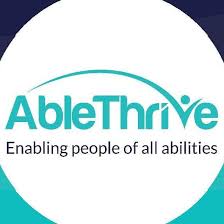|
As Beth wheeled forward, she paid attention to opportunities, many of them fortunate accidents of one kind or another. Through NYLN, she applied for a Congressional Intern Grant through the American Association of People with Disabilities (AAPD) and the Mitsubishi Electric America Foundation. The grant covered summer housing in Washington, DC, avoiding a huge expense. Next, she submitted intern applications to congressional offices.
“I was accepted into Senator John Kerry’s office first, so I jumped on that,” Beth said. “I was so excited because I respect him.” As summer began, I shopped with her for dress clothes and a professional-looking bag for the back of her wheelchair. I helped Beth move into an accessible dorm at George Washington University. The AAPD interns shared dorm suites on the same floor. Beth toured museums and monuments with her two roommates. She connected with the other interns as well as the hustle of big city life. “It was a life-changing experience. The disability community is so active in DC.” The Metro subway, newer than Boston’s T, carried Beth to Capitol Hill every weekday. She reluctantly conceded to the occasional push from strangers as she wheeled up the hill from the subway to the Capitol, especially on wet sidewalks. She worked on disability and health care issues at a desk right next to the Senator’s friendly office manager Mary. "We had installed handicapped door openers and Beth never used them," Mary said. "She has an unbelievable attitude and is sweet as can be. Nothing will stop her.” It also was Beth’s fifth swimming summer: still training year round on the US Paralympic National Swim Team and with the Harvard Women’s Swimming and Diving team through the fall/winter seasons. Beth frequented a crowded YMCA pool in DC after work. One evening on the way back to the GW dorm in pouring rain, she bypassed the subway elevator she needed because of a too-friendly homeless man. Beth wheeled several more blocks in the storm to the next Metro stop. Next: A BIG Ask!
6 Comments
I have exciting news to share: I signed a publishing contract for my memoir, Struggling with Serendipity, with a traditional publisher (not self-publishing)! I wanted my awesome blog followers to be among the first to know, before I post the news on Facebook and Twitter. Thanks so much for your support! The next segment in my story follows.
During John’s spring break, we drove twelve hours from Tiffin, Ohio to Cambridge, Massachusetts, taking Route 90 most of the way. It was worth it to spend a few days with Beth. A decade earlier, the one-hour drive from Tiffin to Vermilion seemed long, but no more. I bought tickets for our first Red Sox game at Fenway Park with John and Beth. The huge crowd at the stadium an hour before the game surprised me. We lined up by the field to meet some of the players. Many lingered to talk to the smiling college student in a wheelchair with the navy blue Red Sox cap. The stadium had old-fashioned charm. The homerun fence was painted bright green: the green monster. With every seat in the stadium taken, many others paid to stand to watch the game. The enthusiastic, rowdy crowd reacted to every play, something I’d never seen before. My first experience with intense Boston sports fans, but not my last. Bostonians are known for taking their professional sports teams seriously, a fact supported by many winning teams. We weren’t prepared for the cool weather, so I signed up for a credit card to get a free Red Sox blanket. I wrapped it around my daughter’s shoulders (and later cancelled the card). It was parent’s week at Harvard, so John and I visited Beth’s class on Ethics, Biotechnology, and the Future of Human Nature. Dr. James Watson, the former head of the Human Genome Project who discovered the structure of DNA with Dr. Francis Crick, was the guest speaker that day. His controversial affinity for eugenics created a lively discussion with the class. eugenics |yo͞oˈjeniks| the science of improving a human population by controlled breeding to increase the occurrence of desirable heritable characteristics. Developed largely by Francis Galton as a method of improving the human race, it fell into disfavor only after the perversion of its doctrines by the Nazis. Dr. Watson encouraged the Harvard students to have many children. Beth joined the class debate on the potential of stem cells and the controversy over discarded embryos for research. Though never focused on a cure for her disability, she supported medical research. An upcoming vote in Congress in the summer of 2006 heated up the debate across the country over federal funding for stem cell research. We didn't know that Beth would be in the middle of it. Next: A Life-Changing Experience! As a new year began, I said goodbye to everyone at the group home and gratefully turned in my keys. I gave myself the gift of time to live in the moment, connect with loved ones, and take better care of myself. I aimed for the lower headache level I had before the manager job.
A few weeks later, I was invited to a birthday party at the group home. It was good to see the residents again, but it also was nice to leave, with no responsibility for their lives. Not long after, the resident at the group home with the feeding tube passed away and I attended his funeral. I cried during his sister’s eulogy as she described his joyful greeting when she visited him, something I had the privilege to witness. From our home in Ohio, I kept in touch with Beth while she finished her first official season with the Harvard Women’s Swimming and Diving (HWSD) team. Harvard was famous for extraordinary professional connections. Beth found that to be true, but she appreciated other associations as well. For her twentieth birthday in April, the college’s shuttle bus drivers pitched in to surprise her with a bouquet of flowers. Even at 6 a.m. on the way to the pool, Beth conversed pleasantly with the drivers and always thanked them. She became friends with the bus dispatcher, Bonnie, who also used a wheelchair. At the dispatcher’s request, Beth spoke at two Boston schools. Bonnie attended HWSD home meets with her young daughters, and the girls asked Beth to autograph their meet programs. In the spring, she missed college classes for a week to fly to Antwerp, Belgium with the U.S. Paralympics National Team. She earned four first-place finishes. Her hometown coach traveled with the team as a new U.S. Paralympics coach. “Coach Peggy has helped me get better with almost every meet,” Beth said. ”She’s been with me every step of the way.” When a riot broke out in Antwerp, the coaches rushed to gather up the sightseeing swimmers. Everyone was fine. Some even found inexpensive treasures in the diamond capital of the world. My daughter’s only purchase was a gift for her sister Maria, a ring with a small diamond, similar to the HOPE ring. Beth had worn hers every day since her injury. Engraved with the word HOPE, Beth’s ring looked exactly like the ones her best friends owned. The rings were made after the car accident six years before, and continued to be a meaningful reminder of the love of good friends. Next: First Time at Fenway! One of the few perks of being a group home manager was making the work schedule. I set up everything at work so I could be off for a long weekend in early December. Beth made her way to Boston’s Logan airport on her own. She traveled with a duffel on her lap and a full backpack on her wheelchair handles, and rode in an accessible taxi to the big airport. She stayed in her manual wheelchair until the plane boarded, when she moved to a small aisle chair to access her seat on the plane. Her wheelchair was tagged and put underneath with the luggage. She kept her duffel and backpack with her on the plane to avoid baggage claim later. After the landing, she was always the last passenger to deboard.
Beth was stuck on the plane until someone brought an aisle chair to carry her back to her own wheelchair. I flew out of Detroit and met Beth at the Minneapolis/St. Paul International Airport. It was wonderful to reconnect with Beth since we had been separated for months, for the first time. I drove a rental car to our familiar hotel across from the university pool complex. I had a cell phone, but no smart phone or GPS, so I had a routine for swim trips. I printed Google maps to navigate around a new city. By the time the two or three day swim meet in a strange city ended, I had just started to gain my bearings. In Minneapolis, I could relax, since I knew where to go from previous swim meets there. I had a good sense of direction. Ever since I grew up a few blocks from Lake Erie in Lorain, Ohio, I could usually find north, to the water, from different places around the state. My lake sense, my true north, didn’t work in other regions, unfortunately. However, my real true north was my family. The beautiful pool at the University of Minnesota bumped down to second on Beth’s list of favorite pools after Harvard’s Blodgett. She achieved an unexpected milestone at the winter meet: a PanAmerican Record in the 100-meter backstroke. She also added a brand new American Record in the 150 IM (backstroke, breast, and free), and reached an amazing fourth place in the IPC World Rankings in the 200 freestyle! If only the 200 free was an official event for her S3 disability classification. With an eye on the 2008 Beijing Paralympics, we hoped it would include at least one longer S3 event. Beth set and reset American Records on the Harvard Women’s Swim Team and the U.S. Paralympics National Team, working toward the perfect freestyle, the ultimate 50-meter freestyle record, and Beijing. Next: Moving On! |
Cindy KolbeSign up for my Just Keep Swimming Newsletter by typing your email address in the box. Thanks!Categories
All
Archives
November 2022
|





 RSS Feed
RSS Feed











